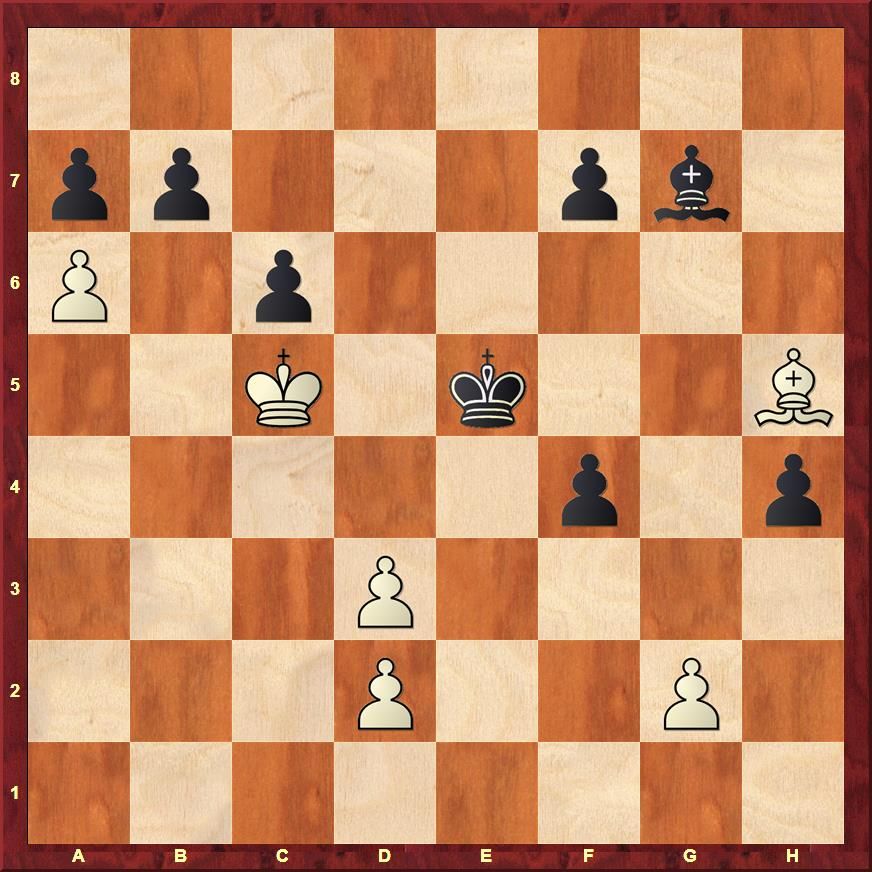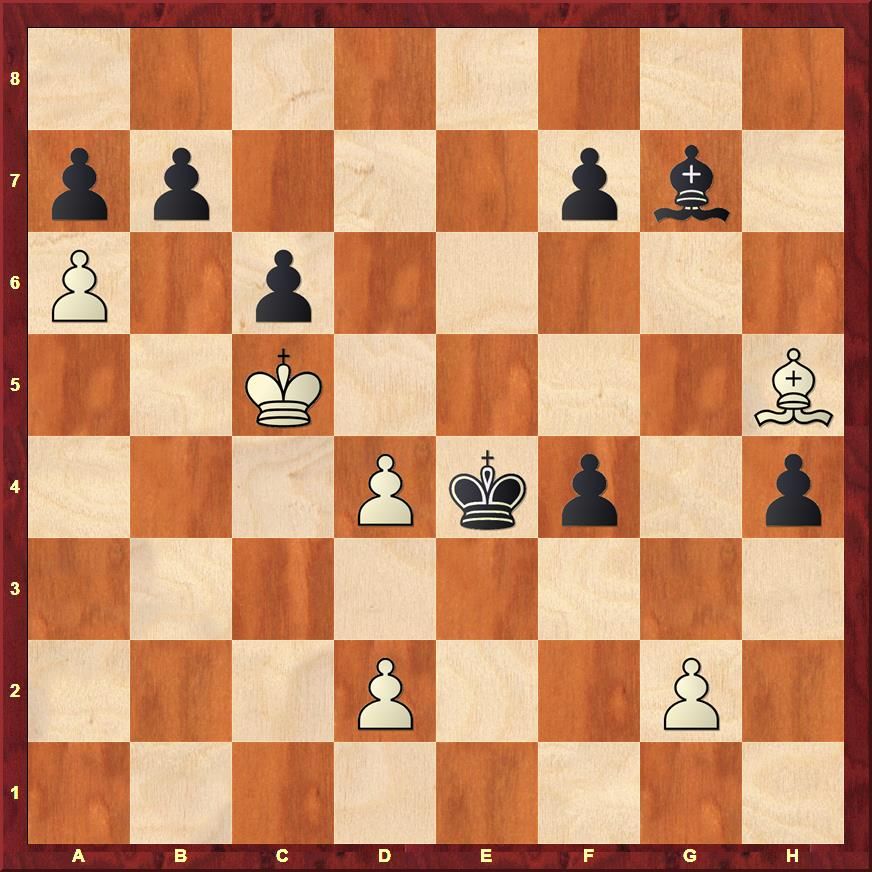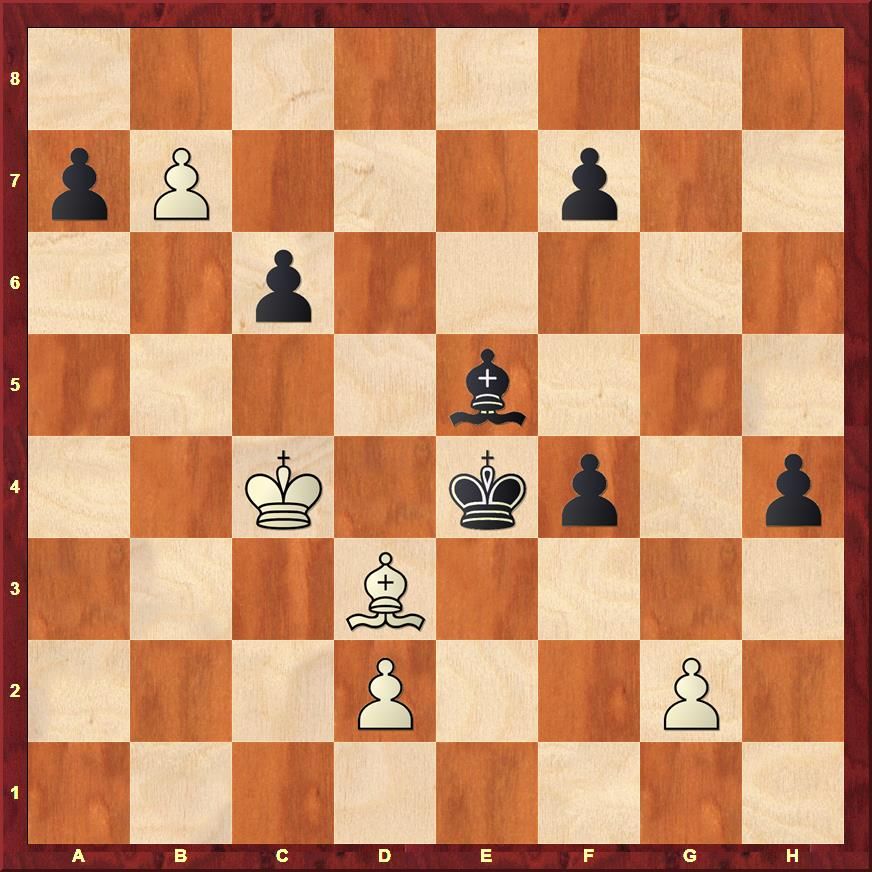Study the studies day 3: Shutting the door!
Many people complain that solving studies doesn't help the practical player because the positions that are composed are not close to a real game situation. Well, in the third edition of our "Study the studies" section we have a position that is akin to a real game. It could easily be the opposite coloured bishop endgame that you would be playing in a tournament encounter. The challenge is to calculate accurately and finish off your opponent. Wanna try it out?!
Study the studies day 3
Dear Chess lover! Welcome back on day 3! I call you a chess lover because you resisted the temptation to go to other websites and instead came to us to rack your brains to solve another study! Thank you very much! So what do we have today?! Today's composition is a game like situation. It would be fun to imagine playing this position against an opponent and being able to execute the main idea of the study! All the best.
Herbstmann, 1927

SOLUTION:
As is usual , we start with the most obvious line of play 1.axb7 doesnt work due to 1...Bf8+ 2.Kxc6 Bd6 3.Bg4+ Ke7=. This line is important see but it is a straight line and not so difficult. Once this is established we realize that the black king controlling d6 square is very important.
So we try to deflect the black king with 1.d4+ As we see there are four squares where black king can go to. 1...Kf5 and 1...Kf6 can be dismissed as the black king doesn't control d6 square and after 2.axb7 Bf8+ 3.Kxc6 Black has no way to stop the pawn.
1...Ke6 is a better try. However after 2.Bg4+! Black has the only move 2..f5 and after 3.Bxf5+- surprisingly Black has no good square to go to and White wins.
Through this logical deduction we realise that after 1.d4 Ke4! is the best move. Now starts the difficult part.

When the king comes to e4, you must make a mental note that any check on the b1-h7 diagonal by the bishop will result in a mate!
2.d3+ seems like a try. Now black has to stay in touch with d4 pawn. So 2...Kxd3 3.axb7 Bxd4+ 4.Kd6. It seems as if White is winning, but Black goes 4...f6! and is able to save himself!(maybe even win!)
In fact after seeing the above variation I thought the f6 move is very important and hence came up with the ingenious 2.Bg6!!(??)+. I thought it was a brilliant idea deflecting the f pawn but it was a losing move. After 2...fxg6 3.d3+ Kxd3! 4.axb7 Bxd4+ 5.Kd6 and now brimming with happiness I said to myself f6 is not possible! What a genius I was! But after the simple 5...Ke4! the work done by the pawn on f6 is done by the king on e4.
So after the brief distraction and realising that 2.d3 doesnt work, we set our eyes on 2.Bf3+ Kd3

3.Be2!! the most important move! And you can find this if you were saying to yourself that the black king should not leave the control of the d4 square. 3...Ke4 is again forced and now after 4.axb7 Bxd4 5.Kc4 Be5, the mental note that we had made after the first move comes in handy...

Go through the moves on our replayable board:
[Site "?"]
[Date "1927.??.??"]
[Round "?"]
[White "Herbstmann, A."]
[Black "\[+0040.46c5e5\]"]
[Result "1-0"]
[SetUp "1"]
[FEN "8/pp3pb1/P1p5/2K1k2B/5p1p/3P4/3P2P1/8 w - - 0 1"]
[PlyCount "11"]
[EventDate "1927.??.??"]
[SourceTitle "Studies 2000"]
[Source "ChessBase"]
[SourceDate "2000.10.30"]
[SourceVersion "1"]
[SourceVersionDate "2000.10.30"]
[SourceQuality "1"]
calculation.} 1. axb7 Bf8+ 2. Kxc6 Bd6 3. d4+ Ke6 4. Bg4+ Ke7 $11) 1... Ke4 $1
(1... Ke6 2. Bg4+ f5 3. Bxf5+) (1... Kf5 2. axb7 Bf8+ 3. Kxc6 $18) (1... Kf6 2.
axb7 Bf8+ 3. Kxc6 $18) 2. Bf3+ $1 (2. d3+ $2 Kxd3 3. axb7 Bxd4+ 4. Kd6 f6 $1
$17) ({Somehow wanting to deflect the pawn from coming to f6 at the end of the
above variation, I chose this move but it turns out to be pretty bad.} 2. Bg6+
$2 fxg6 3. d3+ Kxd3 4. axb7 Bxd4+ 5. Kd6 Ke4 $1 $19) 2... Kd3 3. Be2+ $1 {
The key move!} Ke4 4. axb7 Bxd4+ 5. Kc4 Be5 {The bishop shuts the door for the
king.} 6. Bd3# {And bam! That's a mate!} 1-0
Conclusion:
The best thing about this position was that it had normal material balance. I mean it could very well occur in your game too! And important was to first realize through accurate calculation of variations that Ke4 was the only move. And then, of course Be2+! was the brilliant part of the problem but it was not tough if you had in mind that black king was low on space and that mating him was possible! All in all I love this study a lot!
Related articles:
Study the studies day 1: Give him an offer he can't refuse!
Study the studies day 2: Know your mating patterns
